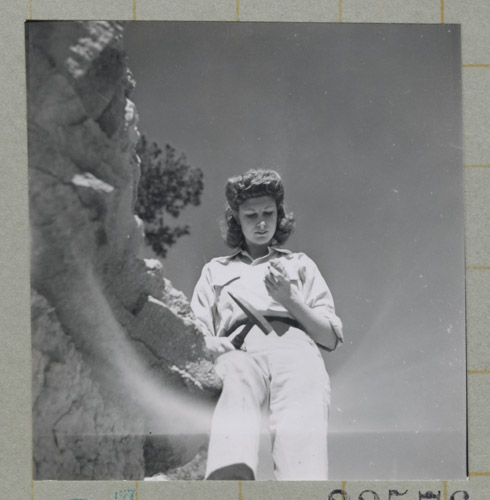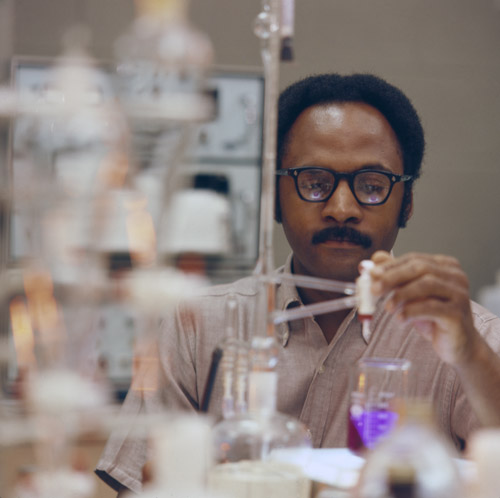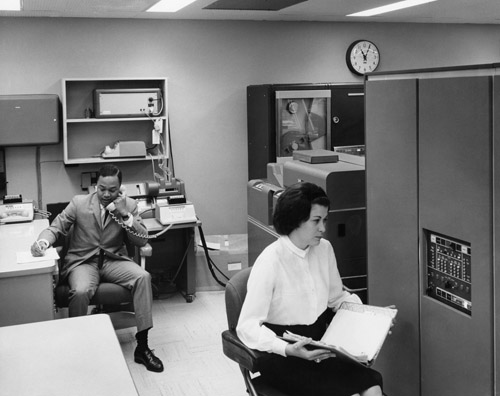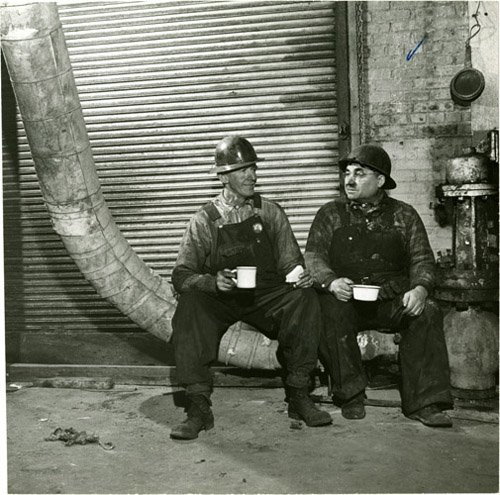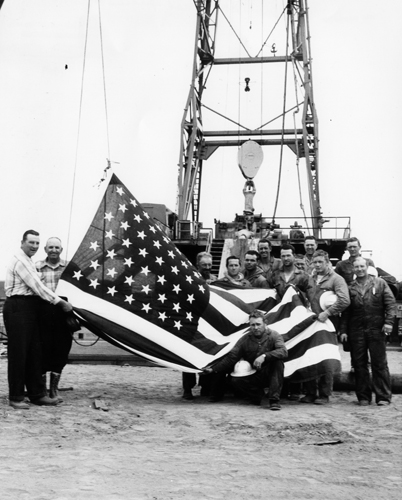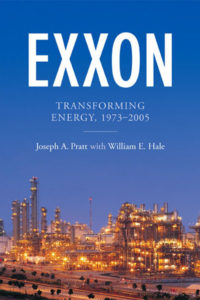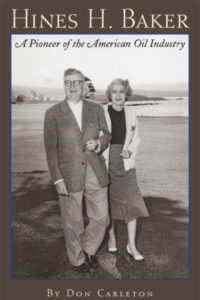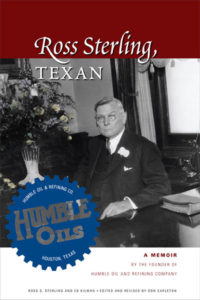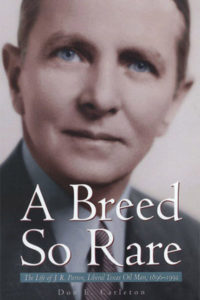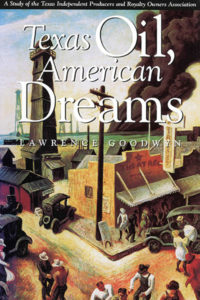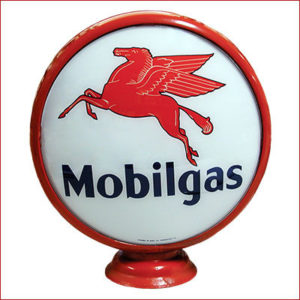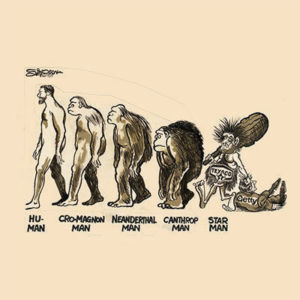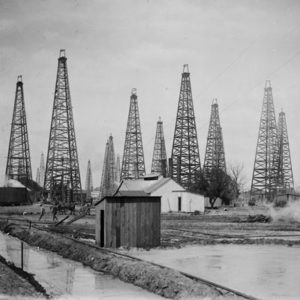The American Energy Industry collections trace the rise of the energy industry from the independent wildcatters of the early twentieth century to the multi-national corporations of today. At the heart of the energy industry holdings is the ExxonMobil Historical Collection, which documents the long history of the corporation, its predecessors and affiliates.
In addition, the Oral History of the Texas Oil Industry Records documents the development of the Texas oil industry from the turn of the twentieth century to 1950. The records include 218 recorded reminiscences of pioneers in all phases of the oil fields and oil booms, including roughnecks, drillers, promoters, financiers, contractors, lease men, and law officers.
Collections also include the papers of numerous individuals and organizations related to the energy industry and other natural resources, such as the Texas Oil Companies Collection, The University of Texas Bureau of Economic Geology records, and the Eberstadt collection. The center’s photographic resources also include substantial materials related to the energy industry, such as the California Oil Photographs and the East Texas Photograph collection.
These collections provide a rich trove of material for studying many facets of the energy industry, from the work of geologists and engineers who seek to discover new sources of oil to the business of refining products for consumer use. The strength of the collections lie in the various perspectives from which the industry is documented. Researchers can study the successes and failures of independent entrepreneurs as well as the evolution of multinational corporations. Through personal recollections, one can see how the industry directly affected the lives of employees as well as how individuals helped shape it. The role of oil in the legal, governmental, and regulatory realms also is well represented. Materials that provide insight into subjects outside the industry—such as general business and governmental history, social and labor movements, marketing and advertising, and genealogy—further enlarge avenues of enquiry.
The center’s principal collections in the field of energy production include the ExxonMobil Historical Collection, the Oral History of the Texas Oil Industry Records, the Texas Independent Producers and Royalty Owners Association Records, and the records of the Pennzoil Company v. Texaco Inc. dispute. By far the largest energy collection at the Briscoe Center, the ExxonMobil Historical Collection documents the long history of Exxon Mobil Corporation, with a focus on the activities and functions of four major corporate entities—Standard Oil Company, Mobil Corporation, Exxon Corporation, and Exxon Mobil Corporation—as well as various predecessor, affiliate, and subsidiary companies, notably Texas-based Humble Oil & Refining Company and Magnolia Petroleum Company. With an estimated 4 million documents, 1.5 million photographs, 3,000 artifacts, and more than 20,000 moving image and sound recordings, it is the largest publicly owned collection documenting a single petroleum company.
ExxonMobil Historical Collection

The collection provides insight into the early activities of the Standard Oil Company and charts the growth of Exxon and Mobil’s core business activities, namely the exploration, production, refining, and marketing of petroleum products, as well as the industry’s development and societal impact throughout the last century. In addition, the collection contains diverse material that can support research on related topics like advertising and brand identity, management and corporate culture, the environment, architecture, graphic design, and philanthropy.
The earliest material in the collection—corporate charters, contracts, correspondence, and agreements—details the operations of Standard Oil Company of Ohio, which John D. Rockfeller and his associates founded in 1870. The documents provide evidence of the company’s aggressive acquisition of refineries, land, stock, and property throughout Ohio, Pennsylvania, and New York, as well as agreements that forged exclusive relationships with pipeline and refining companies, one of the keys to Standard Oil’s success.
Though the Standard Oil material includes a number of revelatory documents, one letter in particular stands out: a legal opinion that was written in 1881 by Samuel C. T. Dodd, Standard Oil’s solicitor and Rockefeller’s attorney. In the simple and unassuming document, Dodd speculates about the possibility for Standard Oil to “organize a Corporation for purpose of holding Stocks of Corporations in various States,” setting in motion the creation of the Standard Oil Trust and foreshadowing the rise of the modern corporation.
Beyond foundational materials, the collection’s greater significance lies in its documentation of two of the strongest companies to emerge from the 1911 breakup of Standard Oil: Standard Oil Company of New York, known as Socony, and Standard Oil Company (New Jersey), which is commonly known as Jersey Standard. Socony, which became Mobil Corporation, and Jersey Standard, which later was renamed Exxon, spent the better part of ninety years as tough competitors, forging individual identities while distancing themselves from their origins as sister companies.
The collection’s extensive series of corporate newspapers, magazines, newsletters, and other periodicals—more than five hundred unique titles that cover more than one hundred years—document all aspects of those corporations’ domestic and foreign operations, from changes in administration to the work that was occurring at individual refineries and oil platforms. As a resource for historical inquiry, the titles offer specific information about exploration, production, and refining in various regions over time. Focusing on places as diverse as Torrance, California; New Zealand; and Brazil, the publications document not only how Mobil, Exxon, and their subsidiaries positioned themselves globally but also the impact they have had on economies and communities.
Besides detailing the industry itself, the collection is rife with material documenting the corporate cultures of Exxon and Mobil, which often retained employees for decades and engendered passionate company loyalty. Now, when workers often switch jobs, or even change careers, materials like recruitment brochures, orientation guides, and corporate publications provide a unique view of what drew people to those companies and a deeper sense of what it meant to work in those environments.
Marketing and Advertising
One of the cornerstones of Mobil and Exxon’s success throughout the twentieth century was their expert use of marketing and advertising, which made them a visible fixture in America and around the world. By acquiring consistent, well-placed ad space in prominent national and local publications, by filling the airwaves with radio spots and television commercials, and by dotting the roadways with billboards, the companies battled to lure drivers to the pumps. In a contemporary environment in which we are constantly inundated with logos and brands, the advertising components in the collection—which include artwork, thousands of full-page advertisements, customer brochures and booklets, and several decades of television commercials for numerous products and services—provide a concentrated resource for tracing changing trends in the advertising industry.
Throughout the collection, one can see evidence of the fusion of brand and corporate identities when Socony Mobil Oil Company changed its name to Mobil Oil Corporation in 1966, and Standard Oil Company (New Jersey) became Exxon Corporation in 1972. That aspect also is evident in the transformations of both company’s trademarks, from Mobil’s Pegasus to Esso and Humble’s tiger in the “Put a Tiger in Your Tank” campaign. Some of the most recognizable graphic design of the twentieth century is represented in famed industrial designer Raymond Loewy’s sleek Exxon logo and the work of Chermayeff & Geismar, who created a complete identity package that informed every graphic element of Mobil’s image, including the company’s familiar “red ‘o’” logo.
While the goals of marketing and public relations often blur, public relations is essentially the tool by which a corporation sells not a specific product, but the idea of the corporation itself. Both Mobil and Exxon created public relations departments early in their chronologies, later renaming them “public affairs” as their missions broadened. The records and sundry publications created by those entities illustrate the myriad strategies and methods that are used to provide information, promote and maintain a particular public image, and anticipate and respond to public concern. As a primary means of communication, news releases document a wealth of corporate changes that span several decades, and speeches by a succession of corporate executives present a reliable source of corporate thought and policy. Mobil and Exxon’s public affairs departments also produced countless publications for public consumption on topics as varied as corporate-government relations, offshore drilling, the energy economy, and environmental policy.
Texas Independent Producers and Royalty Owners Association Records
Two discrete collections at the center document the history of the Texas Independent Producers and Royalty Owners Association (TIPRO), an organization that was founded in 1946 to promote and protect the interests and concerns of independent oil and gas producers, particularly small businesses, and royalty owners through-out Texas. The collections include not only the association’s records but also oral histories that were conducted by Briscoe Center staff. Those items illustrate the association’s work to ensure sound economic and government practices and to demand political accountability in the oil and gas industry. The records include membership lists, financial records, Federal Energy Administration files, legislative files, biographical files, issues of deregulation, publications and reports, news releases, speeches, news clippings, meeting transcripts, annual conference files, court cases, photographs, and other related material.
Pennzoil Company v. Texaco Inc. Case Records and the Pennzoil-Texaco Dispute Oral History Collection
The center includes two more related collections that document one of the most controversial legal battles between two American oil companies: the Pennzoil Company v. Texaco Inc. Case Records and the Pennzoil-Texaco Dispute Oral History Collection. In the suit, Houston-based Pennzoil Company charged that Texaco had unjustly interfered in a 1984 agreement between Pennzoil and Los Angeles–based Getty Oil Company by acquiring all of Getty’s stock just days after Pennzoil had agreed to purchase a three-sevenths stake in the company. The multimillion dollar settlement in Pennzoil’s favor stands as one of the largest in legal history. The case records, which Pennzoil donated to the center, comprise a complete set of legal documents and other materials that were generated during the trial, including trial transcripts, depositions, and pleadings in state and federal courts, as well as comprehensive news clippings covering the case.
Oral History of the Texas Oil Industry Records
The Oral History of the Texas Oil Industry Records is a major energy collection documenting the development of the Texas oil industry from the turn of the twentieth century to 1950. The records include 218 recorded reminiscences of pioneers in all phases of the oil fields and oil booms, including roughnecks, drillers, promoters, financiers, contractors, leasemen, and law officers. Sixteen interviewers recorded the first-hand accounts of persons with knowledge of the history and lore of the early oil industry in Texas. Typed transcripts accompany the recorded interviews, and the original analog tape reels have been digitized for complete access by researchers. Supplementing those interviews are photographs, newspaper clippings, correspondence, brochures, scrapbooks, and literary works that provide further context for the recollections.
Supported by the Walter Benona Sharp Fund, the origins of the project date to a 1951 gathering of oil pioneers in Beaumont, Texas, to commemorate the fiftieth anniversary of the Spindletop discovery. At that time, Mrs. Estelle B. Sharp, the wife of one of the early Spindletop drillers, recognized the need to gather the recollections of those pioneers before they were lost forever. Through her contributions and the efforts of others who were interested in recording the story of Texas oil, the project was begun in the summer of 1952 under the auspices of the University Archives.
In His Own Words
In addition to the aforementioned larger collections, the holdings of the Briscoe Center include the papers of numerous individuals and organizations related to the energy industry and other natural resources, such as the the papers of oil industry pioneer and independent oilman J. R. Parten, Texas Oil Companies Collection, The University of Texas Bureau of Economic Geology records, and the Eberstadt collection. The center’s photographic resources also include substantial materials related to the energy industry, such as the California Oil Photographs and the East Texas Photograph collection.
Adapted from The Collections: The University of Texas at Austin, 2015. Updated 2020.
Our collections inspire our own projects, including books, exhibits, programs, films, and educational materials.
Banner image: Oil Fields at Sour Lake, Texas, undated. East Texas Photograph Collection. Image detail from di_08007.


